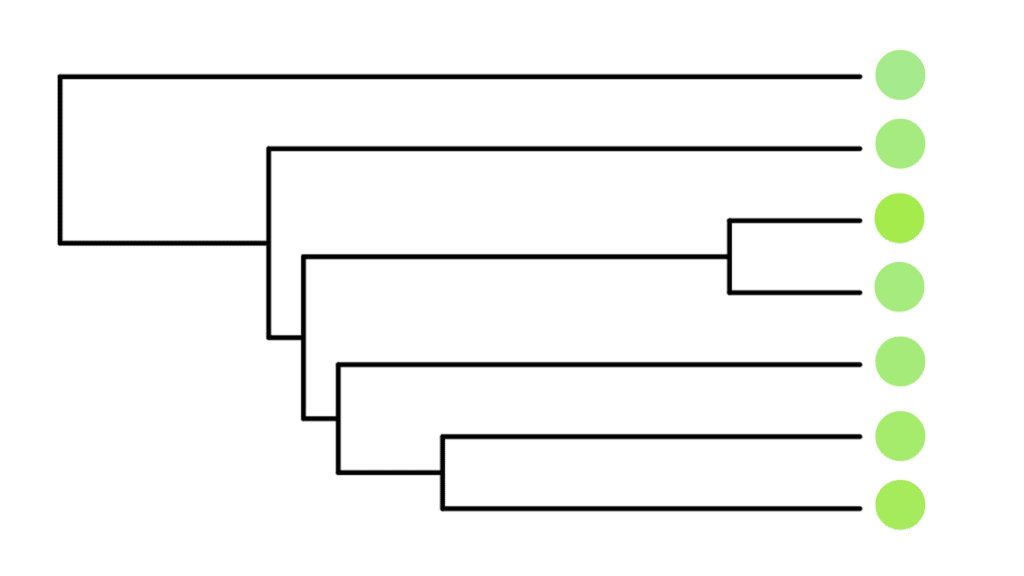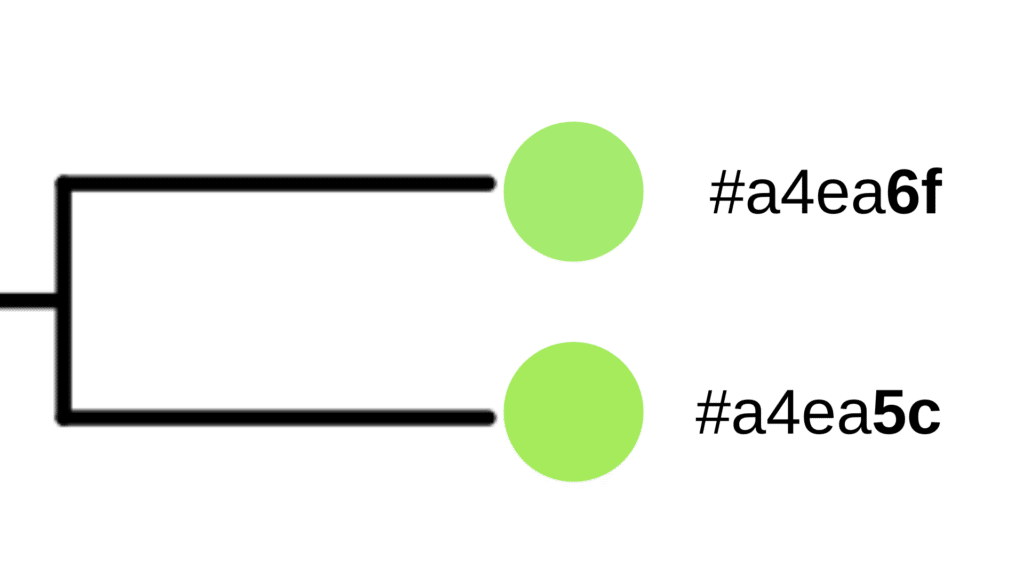What do these groups mean?
When we make these groups, what is the basis for doing so? For example, with the vertebrate phylogeny of the world, we neatly create groups for fish, reptiles, amphibians, mammals, birds etc. Then of course within each group, we can further subdivide the tree of life. We could list every family, genus, species, subspecies, or even individual within any of the groups.
But how do we determine where we draw those circles? After all, what makes a a “good genus”?
We as humans categorize the world according to the world we can perceive. When we see a Lion, we can instantly perceive that it is a completely different species from a giraffe. We don’t need to look at the DNA of a lion and a giraffe to understand these organisms belong to different groups.
Remember though, our visual perception can be deceptive! There exists thousands of organisms whose true sister species are nearly imperceptible to our eyes. However, their genetics reveal deep historical lineages. This is particularly true the further we zoom into the tree of life. Just because we can’t see the difference with our eyes, doesn’t mean the difference is not contained within their genome.
When lineages of organisms diverge into different species, but the differences are difficult for us to distinguish by immediately visible characters (e.g. color, size, life history traits etc.) we call this cryptic speciation. A great example are the Batrachoseps salamander found on the western coast of North America. Although they are morphologically very similar, there are at least 23 distinct species in the genus! Often, they can only be distinguished by geographic range or genetic sequence.
For a simplified example, look at the below phylogeny, each tip is a slightly different shade of green. If we were to compare the shade of any individual tip to any other tip, there are certainly tips that would be impossible to distinguish from one another without a highly trained eye.

However, if we were to look at the hex code, an alphanumeric string that tells us precisely what color something is, we could immediately see they are indeed different colors. The below sister groups demonstrate this with the actual hex codes of each color. The shades of green are difficult to discern, but their hex codes clearly differ at the final 2 positions. This is similar to species that may look similar (i.e. circle color), but can be distinguished by their DNA (i.e. hex code).

But the opposite can also be true! There exists many groups of species who appear to be wildly different, but are actually quite closely related. A classic example would be the African Cichlids, primarily confined to Lakes Victoria, Malawi and Tanganyika. Despite containing a wide variety of colors, patterns, and life history traits, the ~750 species all diverged within the last 10 million years, with many doing so in less than 2!
For reference, the Bufonidae family containing ~570 species of toads around the world, diverged from other frog species approximately 78-99 million years ago.
And to complicate matters even further, we have taxa who are distantly related but actually resemble each other quite closely! We often call this pattern convergent evolution, and its where some character evolved independently multiple times. If we were to build a phylogeny, based only wings, we would place birds, bats, and bugs into a single monophyletic group!
At some level, how we categorize the worlds biota is arbitrary.
Most of the worlds biota in the scientific literature were categorized according to the Linnean System which was developed in the 1700’s. Nearly all the major groupings we commonly use today were done hundreds of years before we even knew DNA was a double helix!
DNA is the cornerstone of the modern phylogenetics explosion. It provides a quantity of data that dwarfs any information we glean from the visual physical characteristics of organisms. And, the changes between strands of DNA are the base unit by which evolution operates upon.
However, the circles that were drawn in the 1700s still have echoes to this very day. We are in an age of rapid discovery and the books are rewritten constantly to keep up with the changes. While it is certainly frustrating to relearn names and relationships we once held as true, that is the nature of science! Constant progress towards a goal we hope to never reach!
We are in the era of detangling the tree of life!

